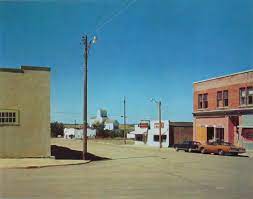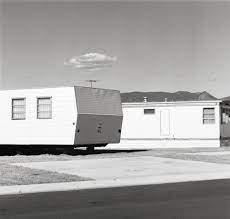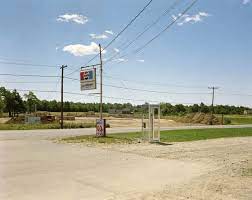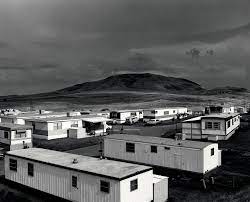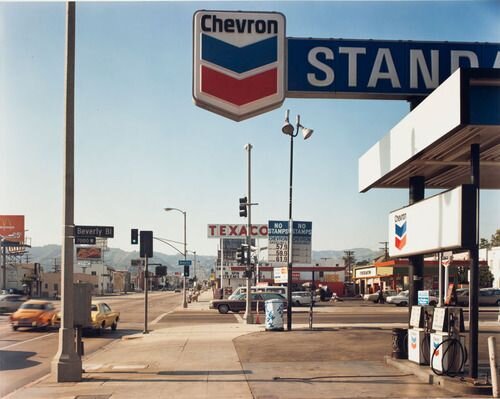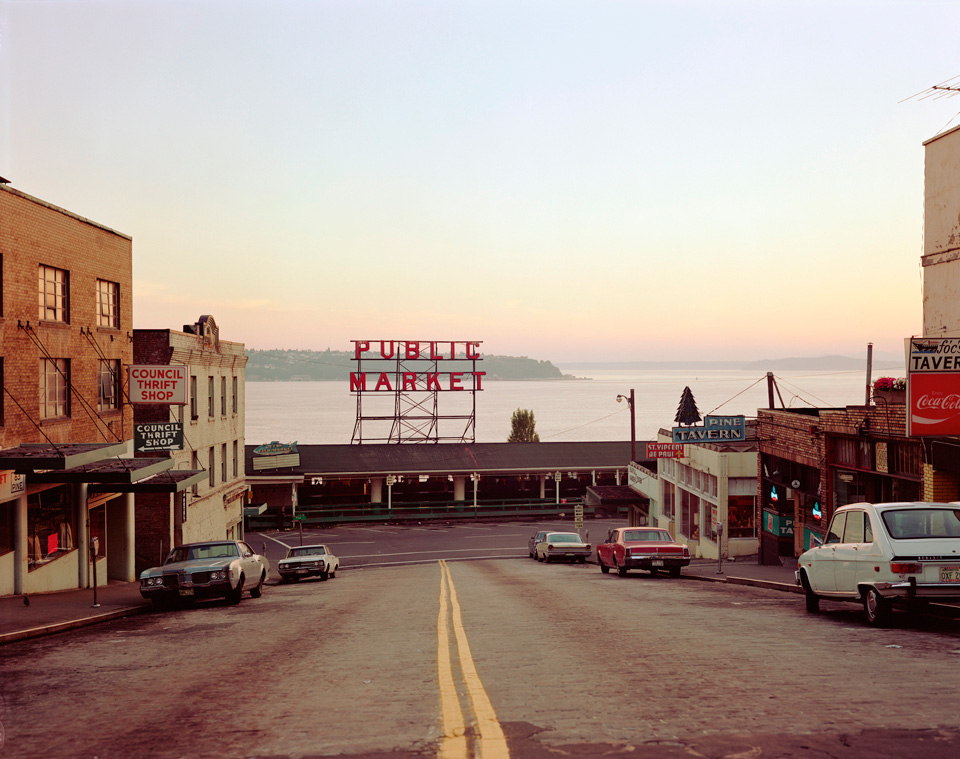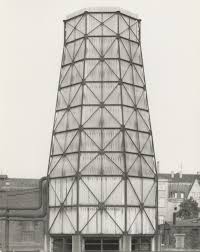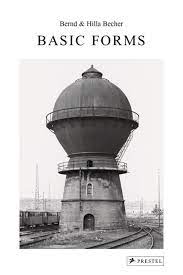The New Topographics
New topographics was a term coined by William Jenkins in 1975 to describe a group of American photographers (such as Robert Adams and Lewis Baltz) whose pictures had a similar banal aesthetic, in that they were formal, mostly black and white prints of the urban landscape. Many of the photographers associated with new topographics including Robert Adams, Lewis Baltz Nicholas Nixon and Bernd and Hiller Becher, were inspired by the man-made, selecting a matter-of-fact subject matter. Parking lots, suburban housing and warehouses were all depicted with a stark austerity, almost in the way early photographers documented the natural landscape.
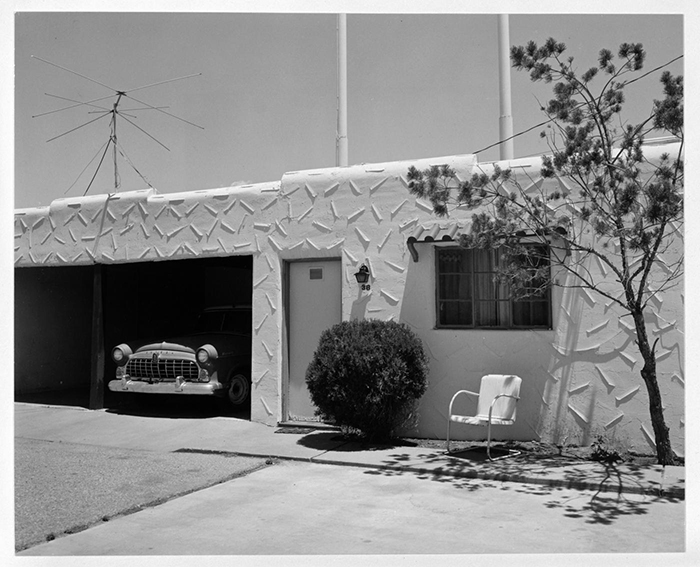
An exhibition at the International Museum of Photography in Rochester, New York featuring these photographers also revealed the growing unease about how the natural landscape was being eroded by industrial development. The new topographics were to have a decisive influence on later photographers including those artists who became known as the Düsseldorf School of Photography.
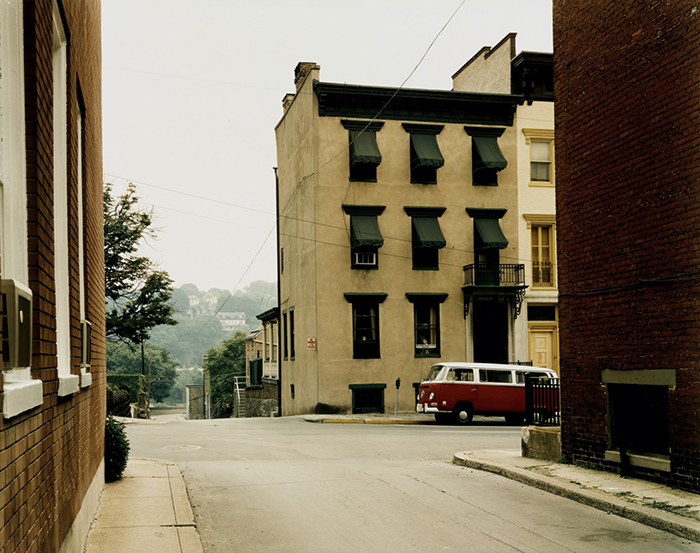
Before the New Topographics created a shift in landscape photography, photographers such as Ansel Adams presented nature as separate from human presence. Adams photographed scenery in a manner intended to provoke feelings of awe and pleasure in the viewer. He used vantage points that emphasized the towering scale of mountain peaks and embraced a wide tonal range from black to white to record texture and dramatic effects of light and weather. The New Topographics brought the new idea that both nature and human presence exist together more and more, as industry and civilisation expand to cover areas that once existed without the presence of people.

In one way, they were photographing against the tradition of nature photography that the likes of Ansel Adams and Edward Weston had created.
What were the new topographics a reaction to?
The authentic images of the new topographics were a reflection of the increasingly suburbanised world around them, with people and industry growing further out of cities and into the countryside. They were also a reaction to the rules of idealised landscape photography that elevated the natural and the elemental.

Typologies – Bernd and Hilla Becher
Bernd and Hilla Becher were the only photographers in the group to illustrate nineteenth-century subjects; instead, the husband and wife team, credited with the founding of the Düsseldorf school, documented nineteenth-century industrial decay. The Bechers worked exclusively in black and white, as did all the other photographers in the exhibition, with the exception of Stephen Shore.
Bernhard “Bernd” Becher, and Hilla Becher, were German conceptual artists and photographers working as a collaborative duo. They are best known for their extensive series of photographic images, or typologies, of industrial buildings and structures, often organised in grids.

Their ‘objective’ methods of taking their images relate to their connection to the new topographics, with their authentic and stark images of industrial structures with vast landscapes behind them – this shows how their surrounding area was affected by industrialisation.
Together, the Bechers went out with a large 8 x 10-inch view camera and photographed these buildings from several different angles, but always with a straightforward “objective” point of view. They shot only on overcast days, to avoid shadows, and early in the morning during spring and autumn. Bernd and Hilla Becher first began their project of systematically photographing industrial structures – water towers, blast furnaces, gas tanks, mine heads, grain elevators and others – in the late 1950s.

